Barcelona is famous for having a huge variety of impressive and beautiful monuments. With Gaudí being one of the most prominent influencers, the architecture of Barcelona is somehow unique and holds a particular style that can’t be found anywhere else.
Discover all the beauty the city offers and get to know its history with this list we’ve curated of Barcelona’s most impressive monuments, its history, and the best way to visit them.
* Post written for the first time in February 2018 and updated in August 2023.
Arc de Triomf
Standing at the beginning of the Passeig de Lluís Companys, this majestic arch is 30 meters high, and it’s decorated with beautiful ornamentations.
Its name literally means Triumphal Arch, and it was built in 1888 as the main access gate for the 1888 Barcelona Universal Exposition, which was held in the Parc de la Ciutadella. Its designer was the Catalan architect Josep Vilaseca i Casanovas.
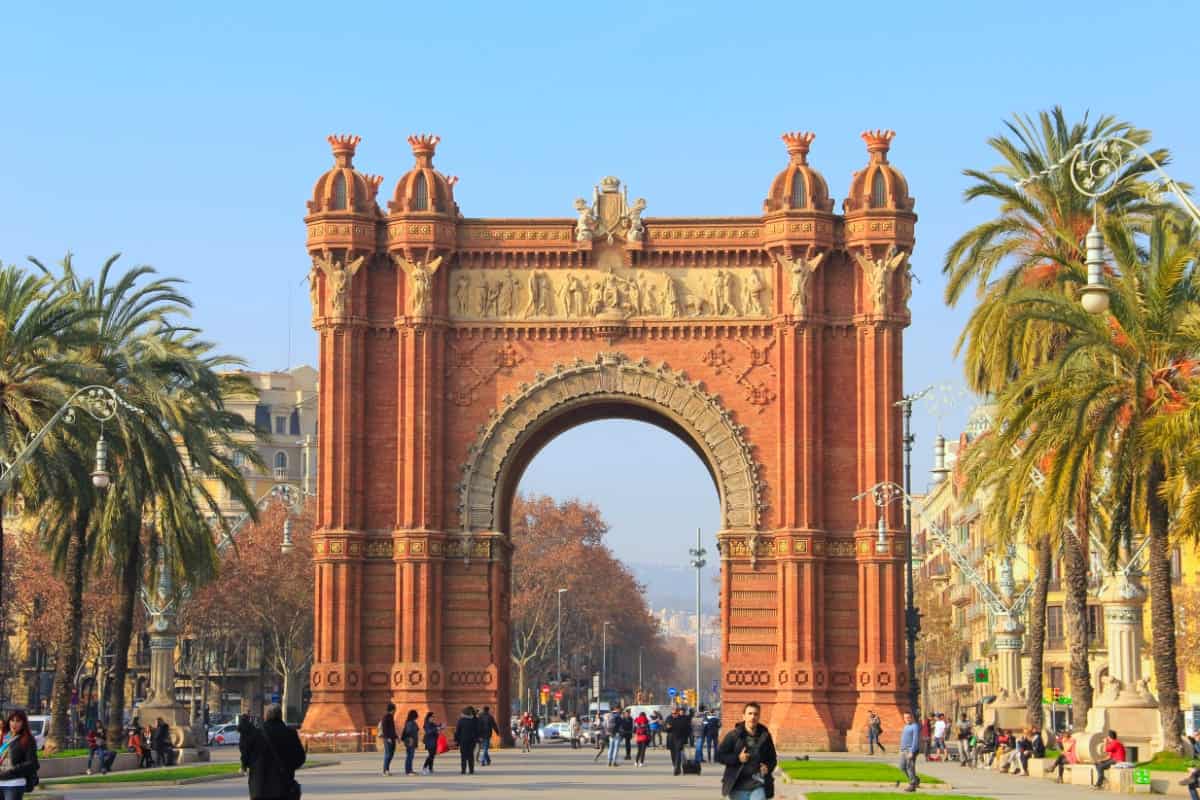
Basílica de Santa Maria del Mar
Built between 1329 and 1383, Santa Maria del Mar is a beautiful church designed in the Gothic style. It’s considered an outstanding example of Gothic architecture in Catalonia due to the difficulty of finding large medieval buildings in this style. Its beauty and immensity are difficult to appreciate because the church is hemmed in by the narrow streets of the district La Ribera. However, you’ll find spaciousness and light on the inside.
Berenguer de Montagut and Ramon Despuig were the architects in charge of building Santa Maria del Mar. During the construction, all the guilds from the district were involved, and even so, building it wasn’t easy. Several troubles affected and delayed it. For example, a fire in 1379 damaged some critical parts of the work. Moreover, an earthquake in 1428 destroyed the rose window in the west end of the church, which was replaced by a new one some years later. Finally, a second fire occurred in 1936 during anticlerical disturbances and destroyed the Baroque altar.
If you’ve ever read the best-seller La Catedral del Mar (Cathedral of the Sea) by Ildefonso Falcones, you must visit this church! The author uses the Basílica de Santa Maria del Mar as the background of the story.
Two different tours allow you to visit the inside of the cathedral, the rooftop and the crypt. The price of them is between 8 and 10 €. On this website, you can find more information about them and also consult the opening hours.
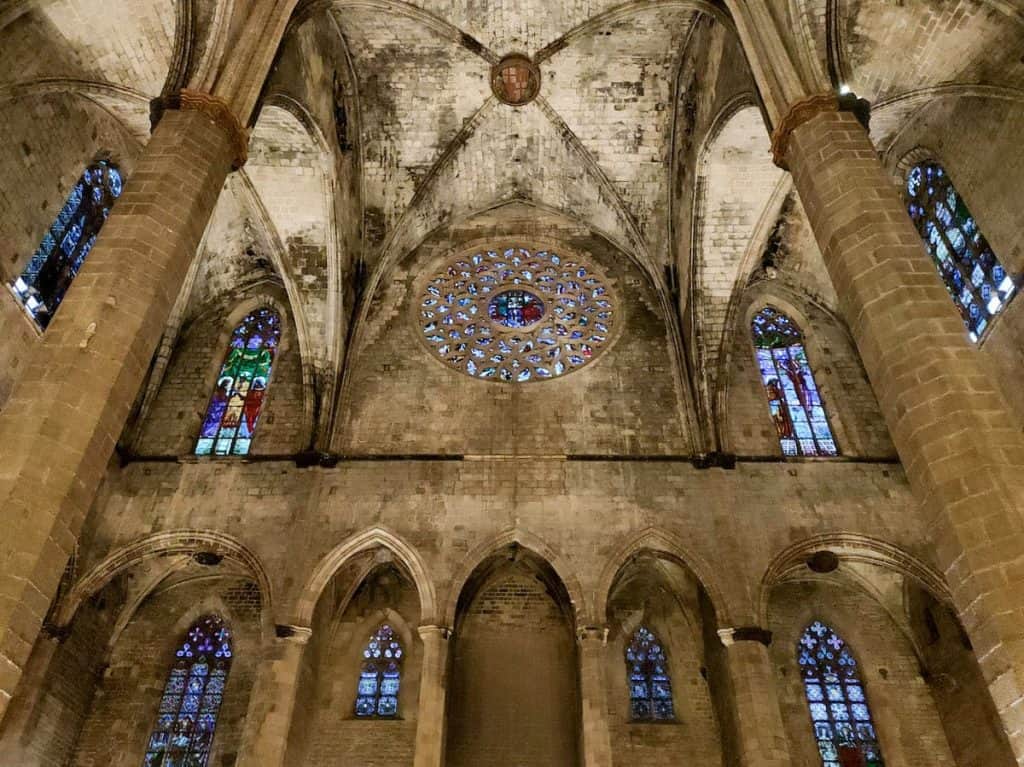
Basílica de Santa Maria del Pi
This Gothic church is nestled between Plaça del Pi and Plaça Sant Josep Oriol, two picturesque squares in the Barri Gòtic. It was built in the early 14th century, but it was gutted deliberately by a fire in 1936, during the Civil War. At the end of this period, the church was restored again. Santa Maria del Pi is famous for its large rose window, an exact copy of the 14th-century original one. Another highlight of this church is the octagonal belfry. If you’re walking around the Gothic Quarter, you may hear a bell ringing. It’s the sound of Antònia, the biggest of the six bells that crown the church’s belfry.
Some say that the church’s name comes from a pine tree (Pi in Catalan) that still stands in front of the church. Another option, and maybe a more realistic one, is that the church was built to honour the Virgin of the Pines.
If you’re curious and want to discover more about this church, visit its website to learn the opening hours and the prices of the visits.
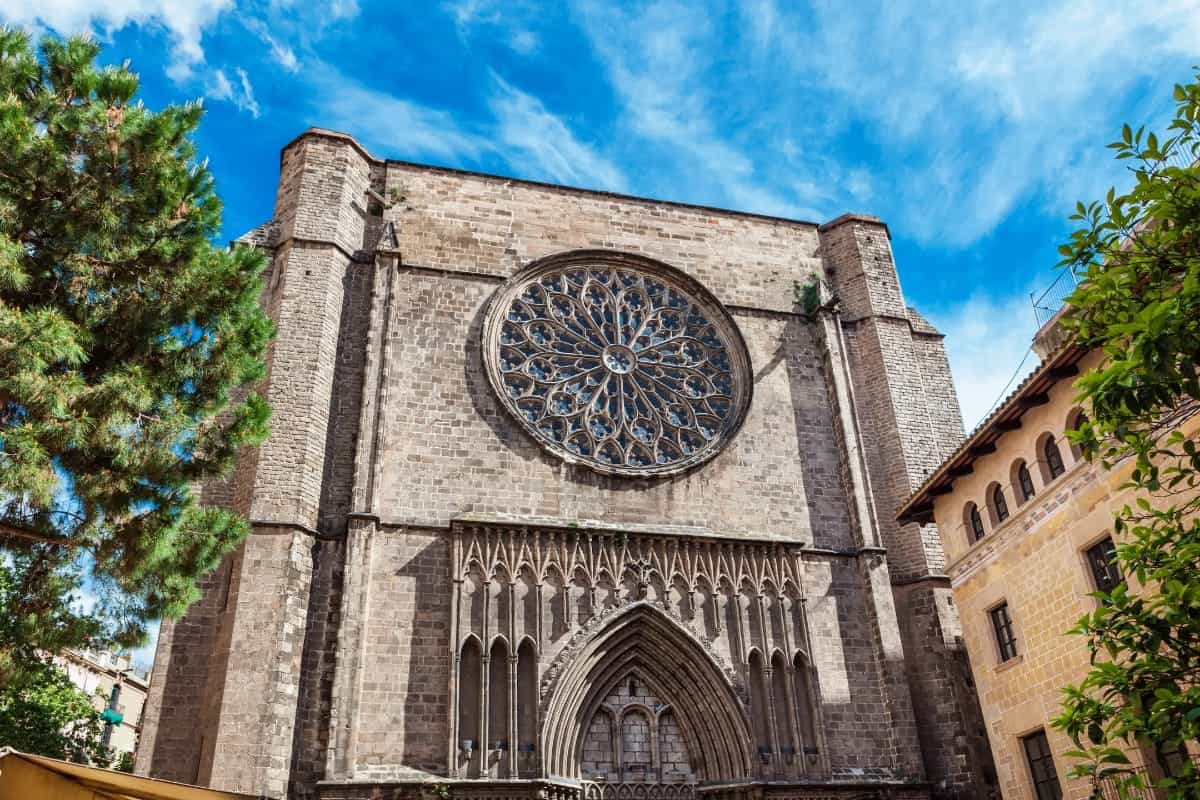
Casa Batlló
Casa Batlló is one of Gaudí’s masterpieces. Even though it’s less known than La Pedrera, it’s even more beautiful and spectacular for many. The building was initially built in 1877, and later, in 1903, it was purchased by Mr Josep Batlló, a prominent textile businessman who owned several factories in Barcelona. His plan was to demolish the existing building, but Gaudí ruled out the demolition and completely redesigned the house. As a curiosity, the original name for the house is Casa dels Ossos (House of Bones).
Its design is just spectacular. The facade is mainly decorated with trencadís, a technique that Gaudí used a lot, and that consists of creating mosaics with broken ceramic pieces. The roof of the building is arched and decorated to look like the back of a dragon.
To sum it up, it’s a fantastic building that became a UNESCO World Heritage Site in 2005. We definitely recommend visiting it and enjoying the amazing piece of art that Gaudí made out of that house. If you’re 99% convinced but still not sure, just look at some pics of it.
👌🏼 Our tip
If you’re in Barcelona during the summer, you can’t miss the “Magic Nights” concert experience. The roof of Casa Batlló is converted into a place to enjoy a drink while listening to live music. Also, a one-hour visit to the house is included in the concert’s ticket.
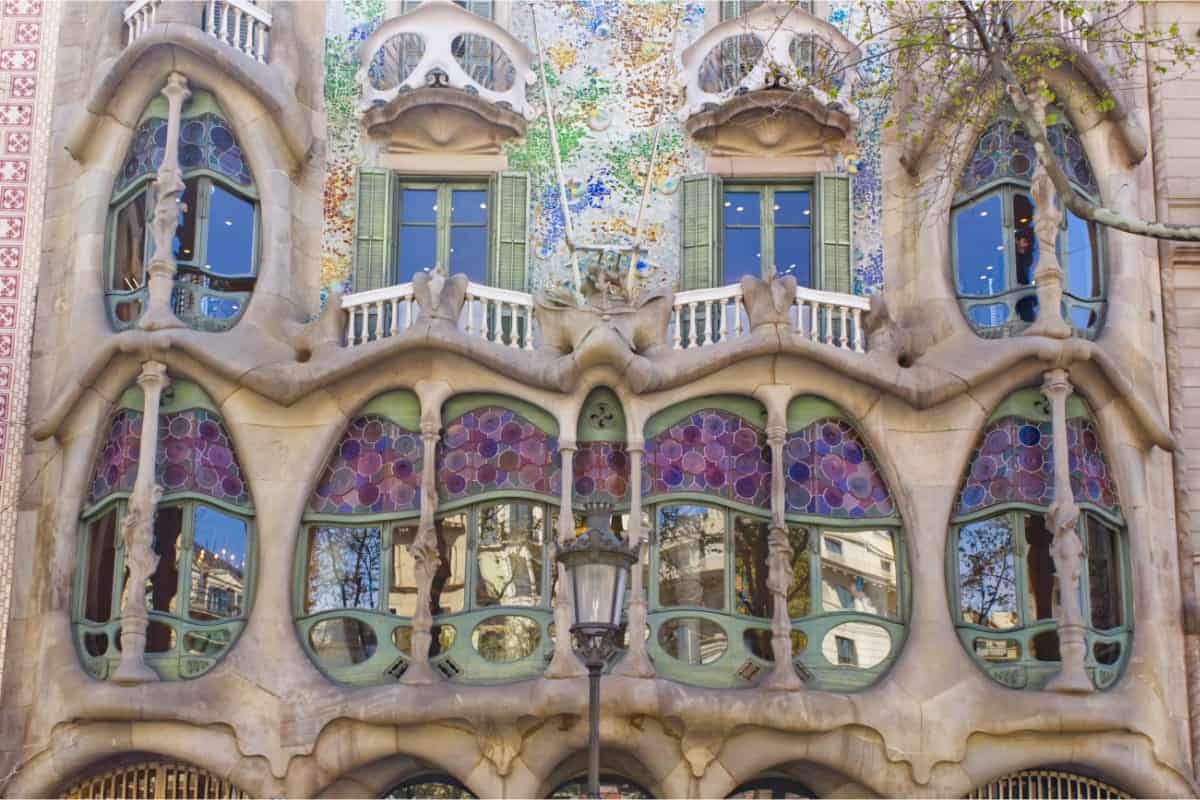
Catedral de la Santa Creu i Santa Eulàlia
Although everyone knows it as the Cathedral of Barcelona, its real name is Catedral de la Santa Creu i Santa Eulàlia (translated as Cathedral of the Holy Cross and Saint Eulàlia). Gracing its facade into la Plaça de la Seu, this magnificent Gothic church is one of Spain’s most impressive religious buildings.
It was built over six centuries in different architectural styles, the predominant one being the Gothic style. The cathedral was built between the 13th and the 15th centuries, but all the visible Gothic elements and the main facade were added during the late 19th and early 20th centuries.
As its name indicates, the church is dedicated to different saints, but mainly to Santa Eulàlia. She’s one of Barcelona’s patron saints. She was a young virgin who lost her life like a martyr during Roman times, and the reason for her death was refusing to dismiss that Jesus was God’s son. Many parts of the cathedral are related to Santa Eulàlia. For example, the crypt is her burial place, where her body lies entombed nowadays. Also, the secluded cloister keeps 13 white geese honouring Eulàlia’s dying age.
The cathedral is open from 12:30 am to 7:45 pm on weekdays, from 12:30 am to 5:30 pm on Saturdays, and from 2 pm to 5:30 pm on Sundays and festive days.
The cultural and tourist visit costs 9 €/person and gives you access to different parts of the cathedral, including the roof and the abbey. However, if you’re a group, the price is reduced to 7 €/person. Take a look at its website to find more info about the visiting hours and fees.
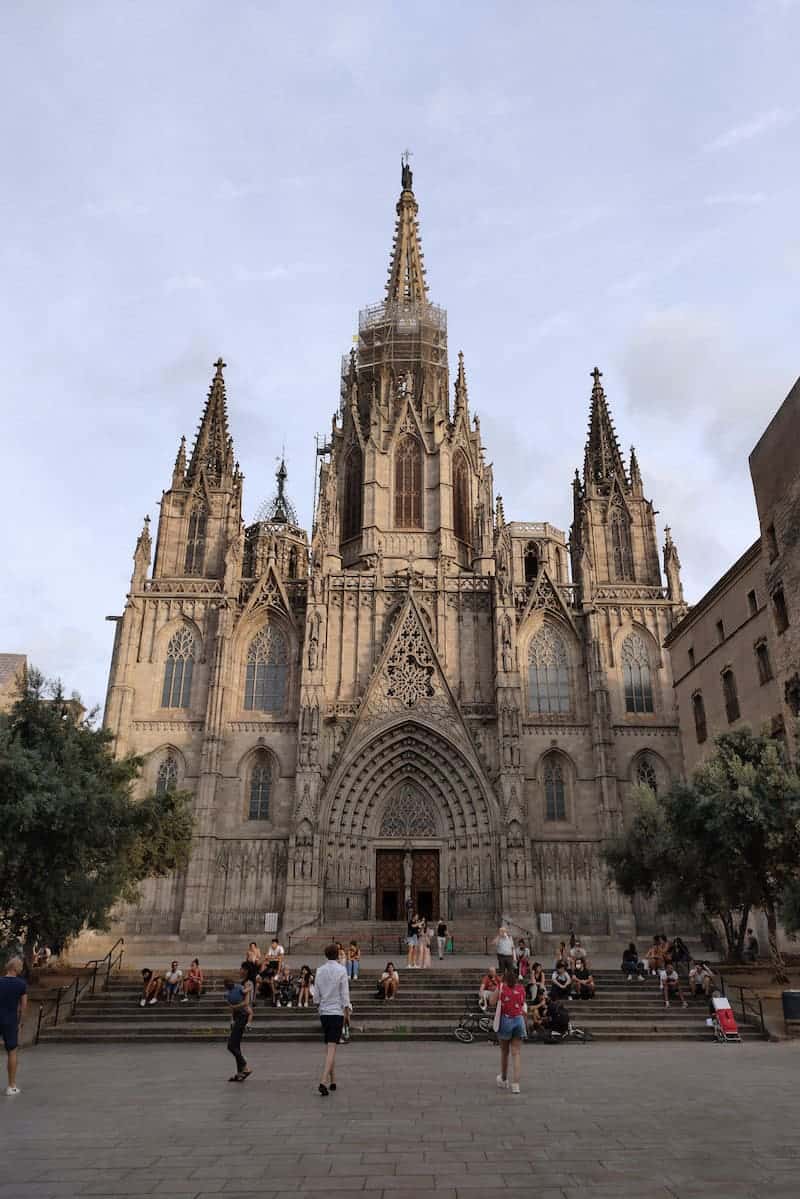
Estació de França
Estació de França (France Station) is considered the most beautiful railway station in Barcelona, and it’s definitely a piece of art worth visiting (for free!). Its style is a mixture of classic and modern, and it’s completed with bronze, crystal, and marble decorations. Despite its size and beauty, not a lot of trains run from the station nowadays.
It was built in 1929 for the International Exhibition held in Barcelona that year. Since then, it has been one of the city’s major stations, connecting France and Barcelona – hence the station’s name. Nonetheless, the station’s status as a central hub for international trains (mainly from France) ended in 2013, when the Trenhotels were discontinued. The reason was the introduction of a new high-speed train at Sants station covering the trips to Paris and some other French cities.
The railway station was designed by Pedro Muguruza and the engineer Andreu Muntaner, who created an elegant and modern station. It’s divided into two sections: the lobby and the train shed. The most impressive and sleek part is, without any doubt, the Noucentista-style lobby. It’s a spacious area with a clock that keeps accurate time. The other part, the train shed, is made of metal and glass and covers the seven platforms with 12 tracks.

La Pedrera
The Casa Milà, internationally known as La Pedrera, was the last masterpiece of Gaudí before he devoted himself totally to the construction of La Sagrada Família. This famous building is located in the Eixample district, and it’s a referent for the Modernist movement. In 1984, it was declared by UNESCO as a World Heritage Site.
As you can deduct from its nickname, “La Pedrera”, which means “stone quarry”, it looks like a giant rock. What distinguishes this building from the rest of Gaudí’s work is the colourless facade and the organic architecture. Gaudí designed La Pedrera inspired by natural shapes, so barely any angles can be found in the building. For example, if you look at the facade, you can see the parallelism with the sea waves.
The house consists of two parts connected only by the facade, the roof and the ground floor. Each of those parts has its own yard and its own entrance. As a curiosity, the house has a natural ventilation system -meaning no need for air conditioning. The top attraction of La Pedrera is, without any doubt, the dreamlike roof. It gives you outstanding views of the city and leaves you speechless because of the variety of forms and colours of the chimneys, staircases and ventilation shafts.
How did the history of La Pedrera start? A couple named Milà possessed a property on Passeig de Gràcia, and they decided they wanted to build a house there. They desired something special, something that stood out in the Eixample district. For that reason, they hired a very successful and innovative architect: Gaudí. The construction started in 1906 and was completed in 1912.
La Pedrera is now a museum, and it’s open to the public for visits and tours. Find more info at its website. Moreover, many cultural events take place at La Pedrera, such as theatre plays or jazz music concerts during summer nights.
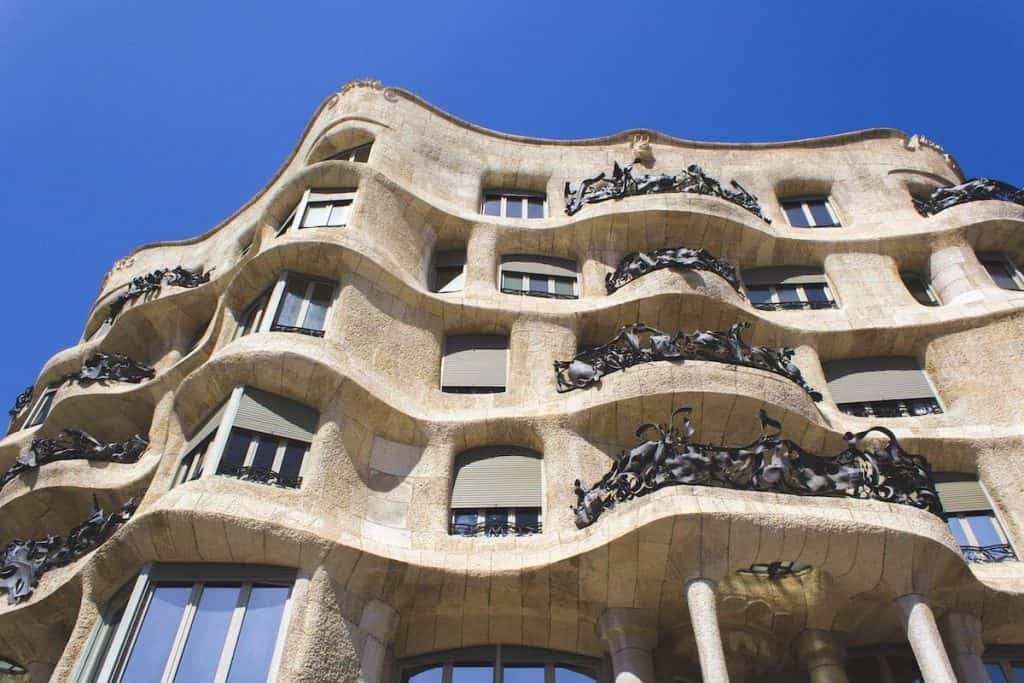
Mercat de la Boqueria
Situated at the heart of Les Rambles, it represents Barcelona’s personality and history, full of colour and life. La Boqueria is Barcelona’s first local market, dating from 1840. It was opened the day of Saint Joseph (19th of March) in commemoration of Saint Joseph’s convent that used to be in that same place. However, way before that time, we can find some signs of selling activity in Les Rambles, where peddlers sold meat in the 13th century.
Nowadays, La Boqueria is the oldest and most complete food market in the city. You can literally find anything you want, from high-quality and fresh fish to the most exotic types of fruit and, of course, the typical and delicious Serrano ham!
Keep in mind that La Boqueria is closed on Sundays. The open hours for the rest of the days are from 8 am to 8:30 pm. You can check the stand map and the schedule of the special days, such as Christmas and holidays.
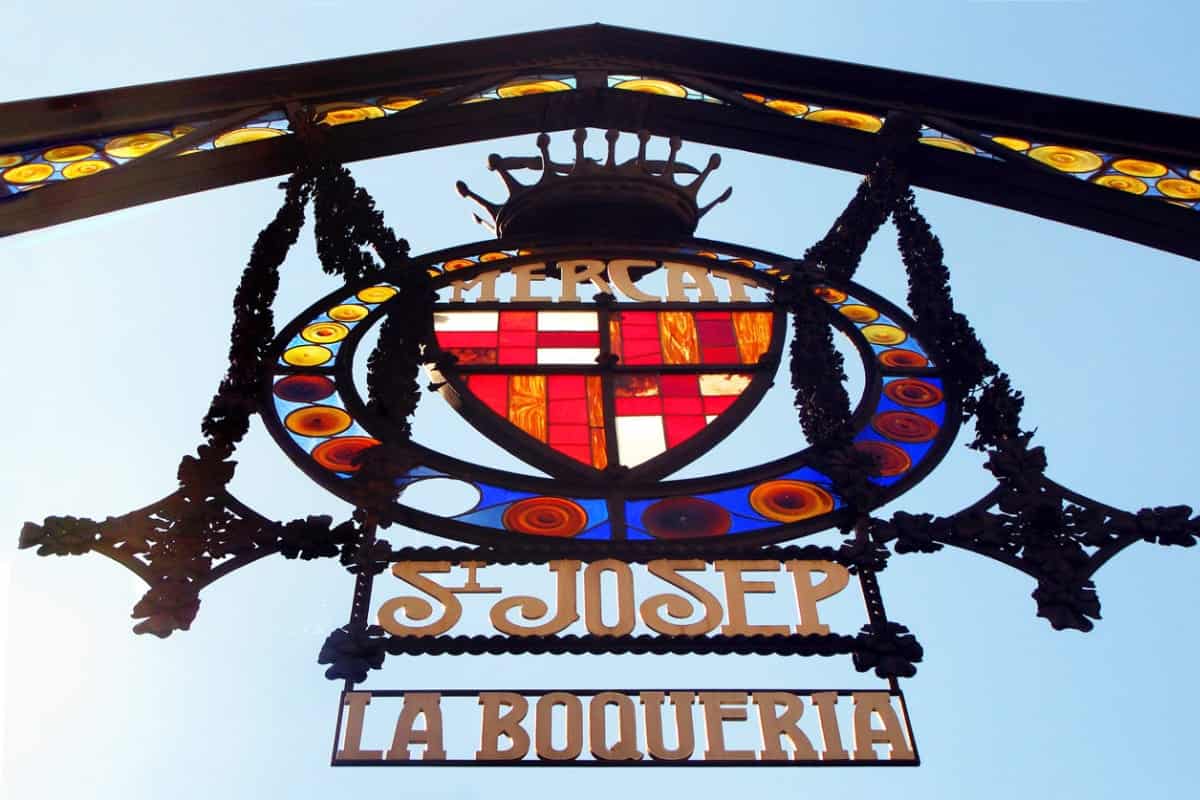
Palau de la Generalitat
The Palau de la Generalitat is one of the few buildings of medieval origin in Europe that still maintains its original function. It’s the seat of the government and houses the institution that originally built it. Moreover, the building is home to the Presidency of the Generalitat de Catalunya, the institution under which the nation of Catalonia is politically organised.
The original building, located on the Carrer de Sant Honorat, was purchased by Alfons de Tous in 1400. During the 15th century, several extensions were carried out by Marc Safont, and the palace was turned into a Gothic building. During the 16th century, a radical change occurred when the principal facade was built on the Plaça de Sant Jaume. The facade was inspired by the Italian Renaissance, becoming the first of this architectural style in Catalonia.
The Palau de la Generalitat is one of Catalonia’s most valued symbols, mainly because it has survived many political and historical disasters. Up to now, 130 presidents have governed from this building, starting with Berenguer de Cruïlles in 1359.
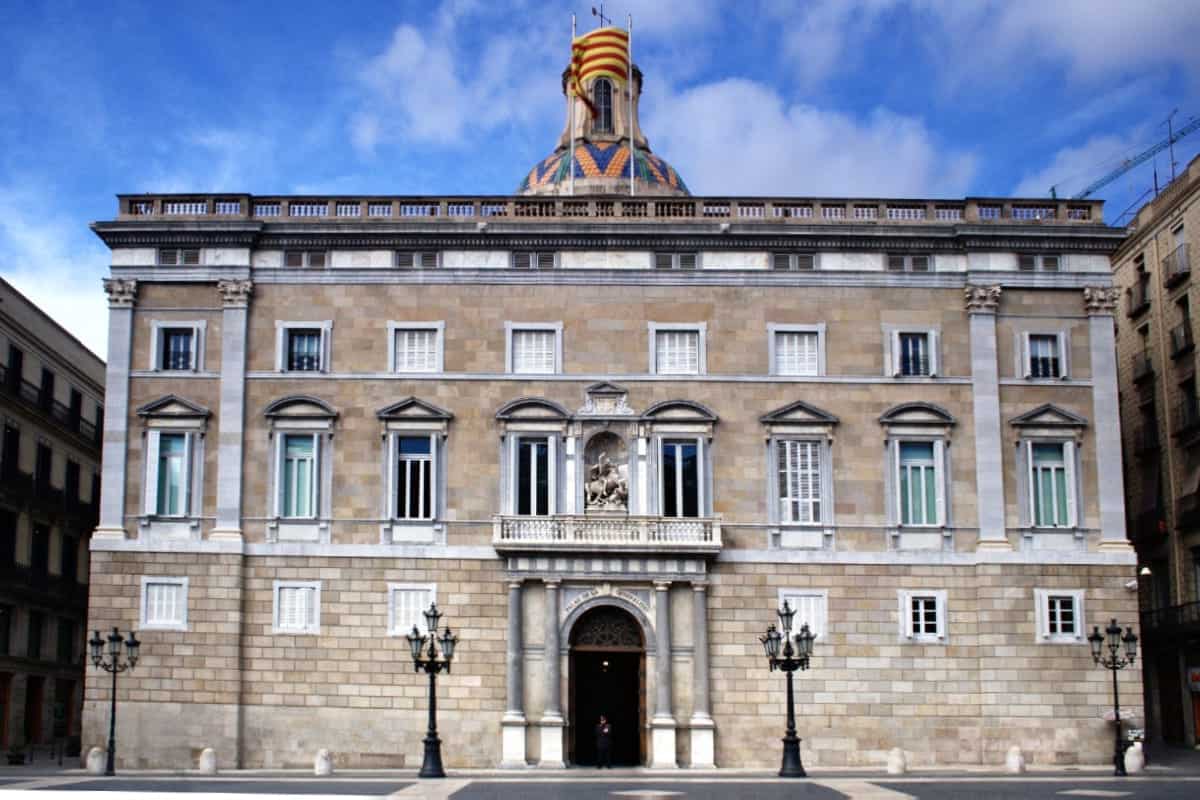
Palau de la Música
Located in the Sant Pere district, the Palau de la Música Catalana is an architectural pearl in the Modernist style. The building is so beautiful and impressive that it’s the only concert venue listed as a World Heritage Site by UNESCO (in 1997).
It was built between 1905 and 1908 by the modernist architect Lluís Domènech i Montaner to be the home of the Orfeó Català, a choral society based in Barcelona. It was all funded by public donations.
The most well-known part of the building is the concert hall, consisting of 2015 seats with an ornate glass roof. It’s mainly used for recitals and concerts.
If you’re into classical music, the best way to discover the interior of this building is to see a concert. If not, the building is worth a visit, so you can just take the guided tours, which allow you to explore the building in fifty minutes. The tours can be in English, but it’s better to book them online because they tend to fill up quickly.
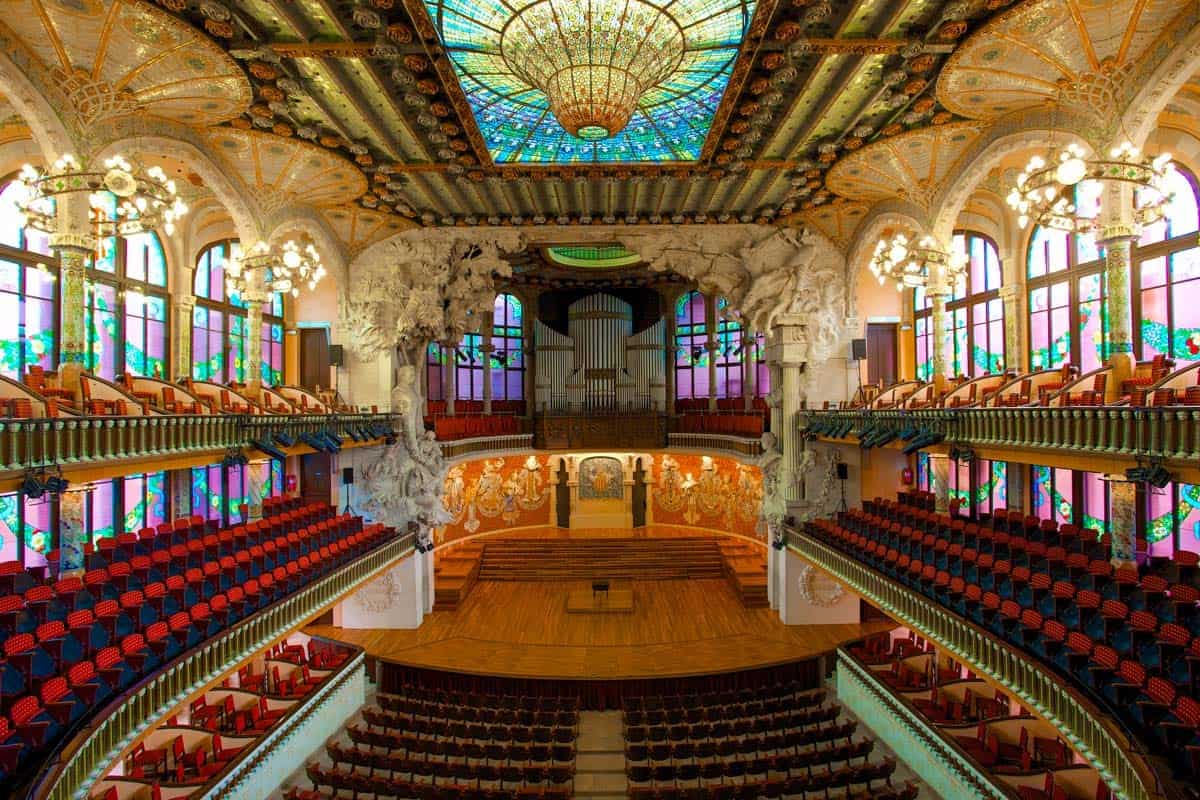
Park Güell
Park Güell is a tribute to nature. It’s an enchanting place where Gaudí’s passion for natural forms is reflected, and the artificial seems as natural as nature itself.
The park was created in 1900 when Eusebi Güell bought a tree-covered hillside and hired the famous architect Antoni Gaudí to create a mini city of houses for wealthy people. At that time, the park was still outside Barcelona. The project was abandoned 14 years later. However, Gaudí had already built some roads and walks, a giant square and two gatehouses in his inimitable style. Such a piece of art couldn’t just be left there and forgotten, so, in 1922, the city bought it to be used as a public park. In 1984, the park was included in the UNESCO list of cultural heritage.
The park has become so popular during the last years that only a certain number of visitors are allowed every half hour. For this reason, and to avoid massive queues, it’s wise to book ahead.
The main attractions of this park are:
- The Sala Hipòstila: represents a forest with 86 columns. It was initially intended as a market of the residential area
- The staircase guarded in the middle by a dragon: it’s made of split ceramics and situated at the main entrance of the park (Carrer d’Olot)
- The Plaça de la Natura: a huge open space famous for a multi-coloured tiled bench curving around its perimeter. This giant platform was not built as a decoration but as a place to catch the rainwater washing down the hillside
- The spired house at the entrance: it’s now a museum, but it was where Gaudí lived for most of his last 20 years
If you’re there, don’t forget to walk to the Turó del Calvari, in the southwest corner of the park, which is the best point for enjoying a breathtaking view of Barcelona.
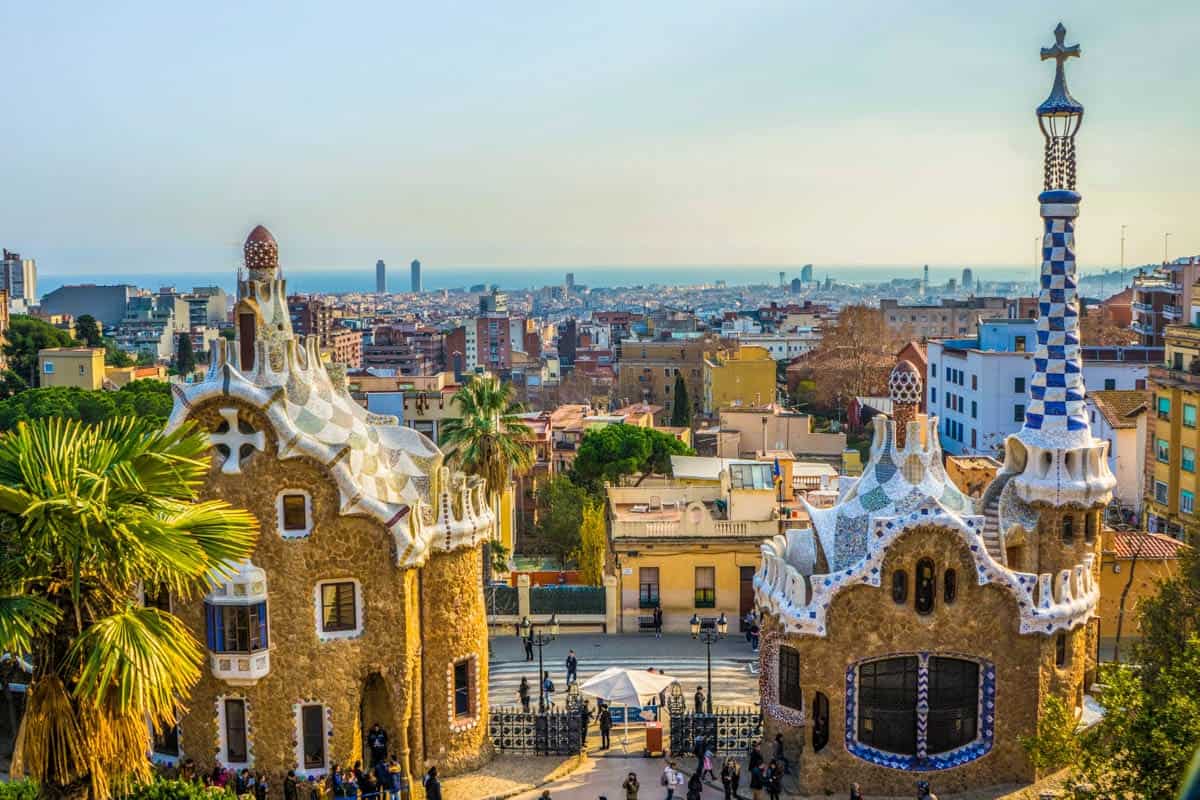
Sagrada Família
The most famous masterpiece of Antoni Gaudí. Although unfinished, its beauty and magnificence can be appreciated from every angle. The Sagrada Família is an international centre for spirituality, visited by millions of people each year and listed as a World Heritage Site by UNESCO.
Long story short, the construction started in 1882 as a completely different project led by the president of the Holy Brotherhood, José María Bocabella. He wanted to create a church dedicated to the Holy Family (Sagrada Família in Catalan). The architect Francisco del Villar was in charge of designing the church in the Gothic style. He began with the construction of the crypt, but afterwards, the work was stopped due to disagreements with Bocabella.
The year after, Gaudí took over the project. He redesigned it in a completely different style and found his life’s work in it. Due to the church’s lush design and huge dimension, it became known as “the cathedral”, although it didn’t host a bishop’s seat.
Since then, many architects have continued Gaudí’s work, and the goal is to finish the whole construction by 2026, 100 years after Gaudí’s death. Right now, the construction is financed exclusively by donations and entrance fees.
The Sagrada Família hides a complex symbology and history behind its walls. Its purpose is to explain the history of the Christian faith and understand the Christian religion. The Nativity facade celebrates the birth of the Messiah, the Passion facade is known as the portal of suffering, and it tells the last weeks of Jesus’ life, and the Glory facade -which is not finished yet and it’ll be the most impressive one- will represent one’s ascension to God.
As we said, the building is still under construction, so expect to see a lot of work when you visit it. However, this doesn’t have to stop you from going as it’s part of the Sagrada Familía’s history.
⚠️ Important!
We recommend buying the tickets online before your visit as it’s usually very crowded and the queues can be extremely long.
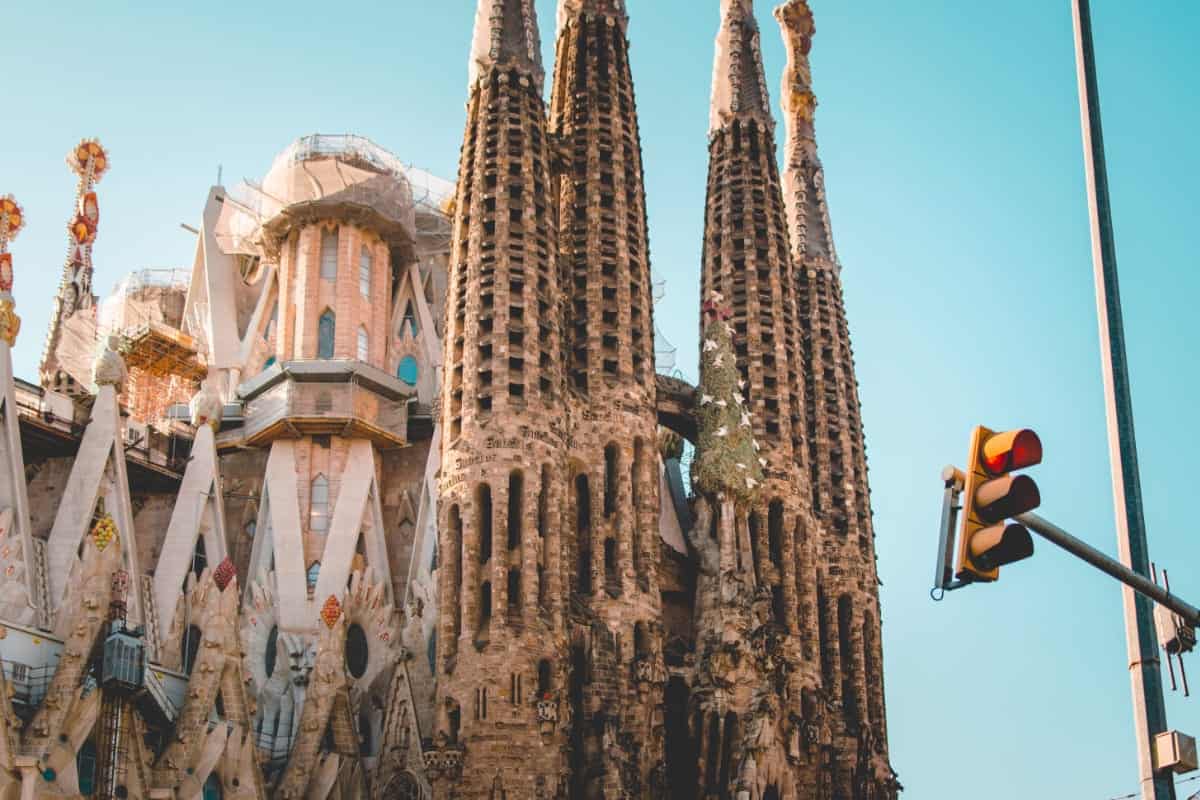

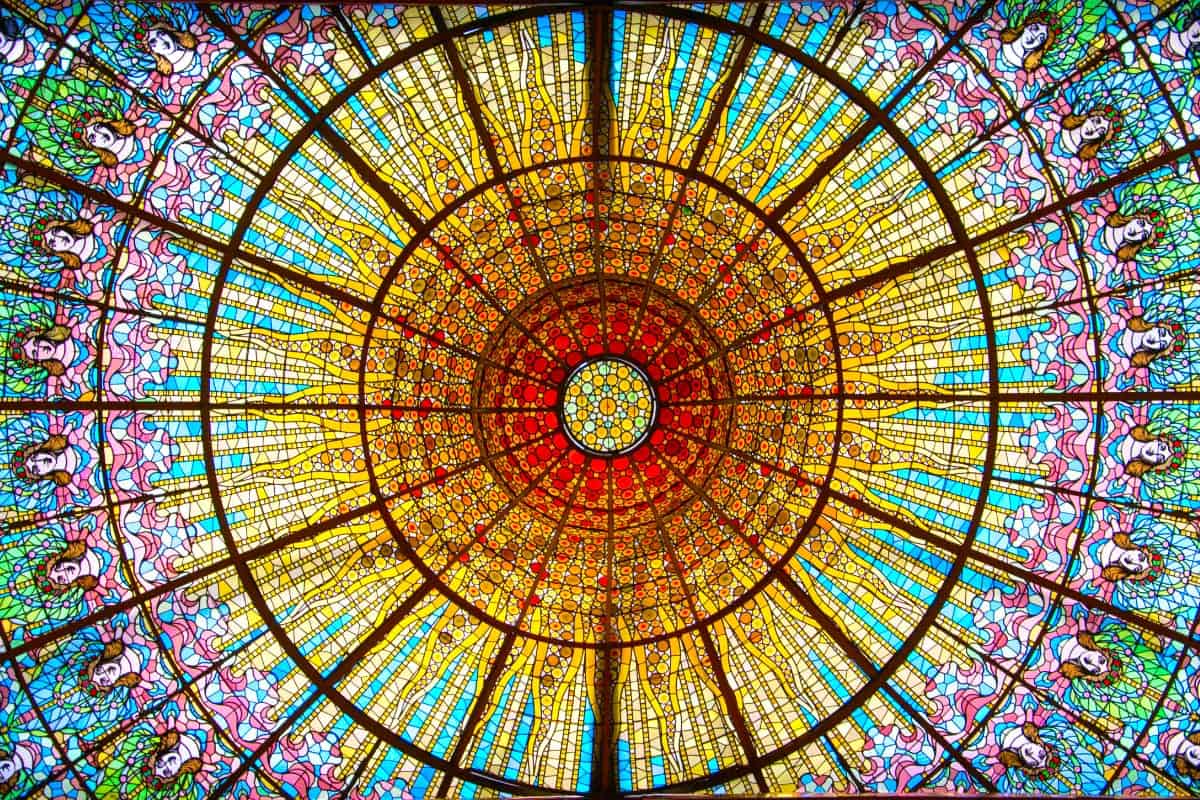
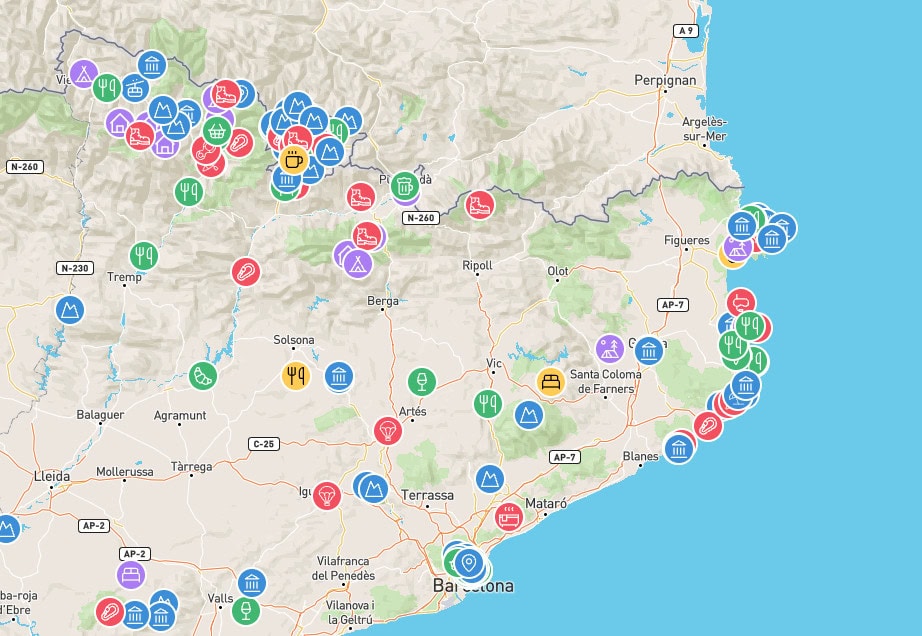
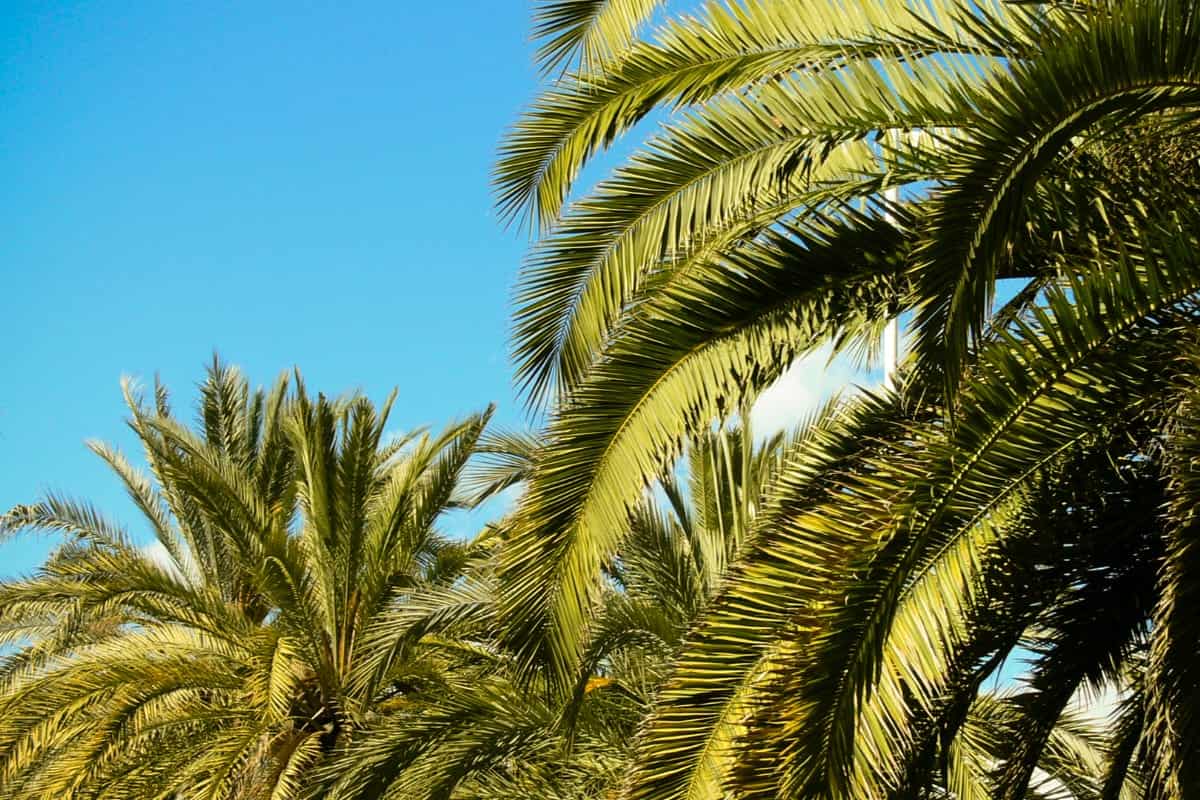
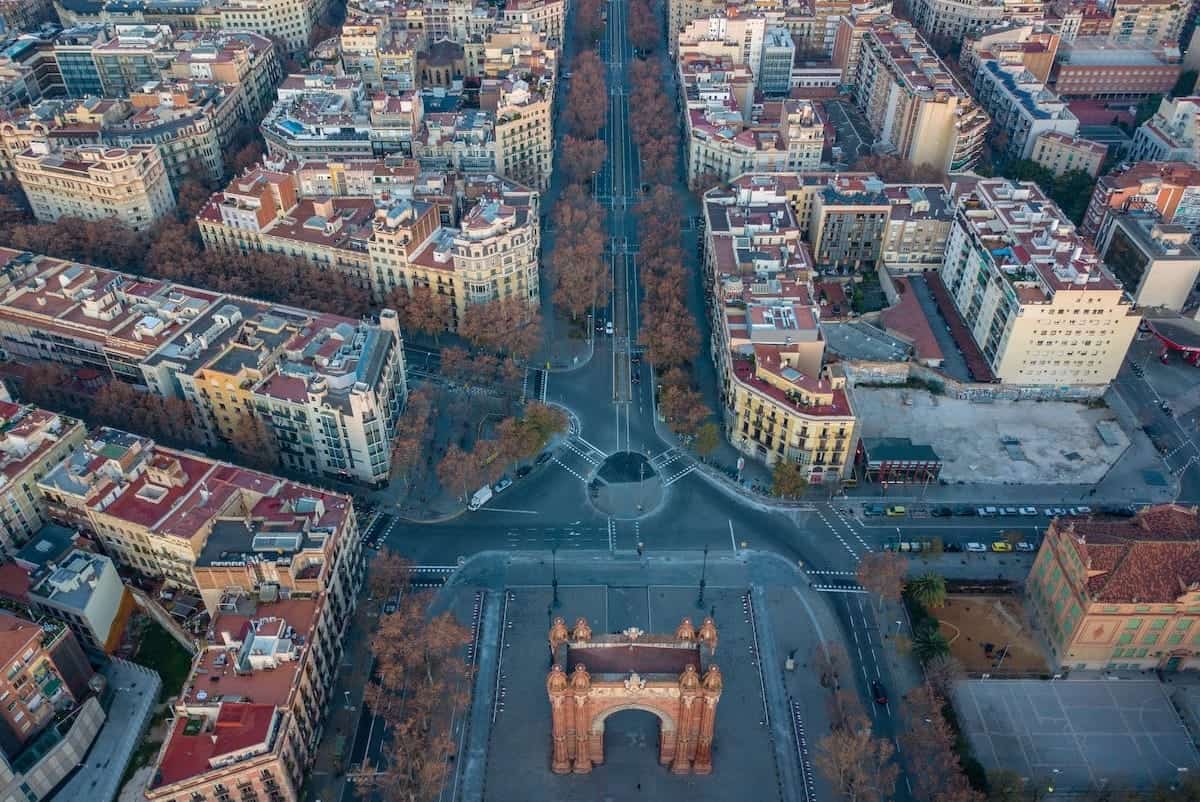
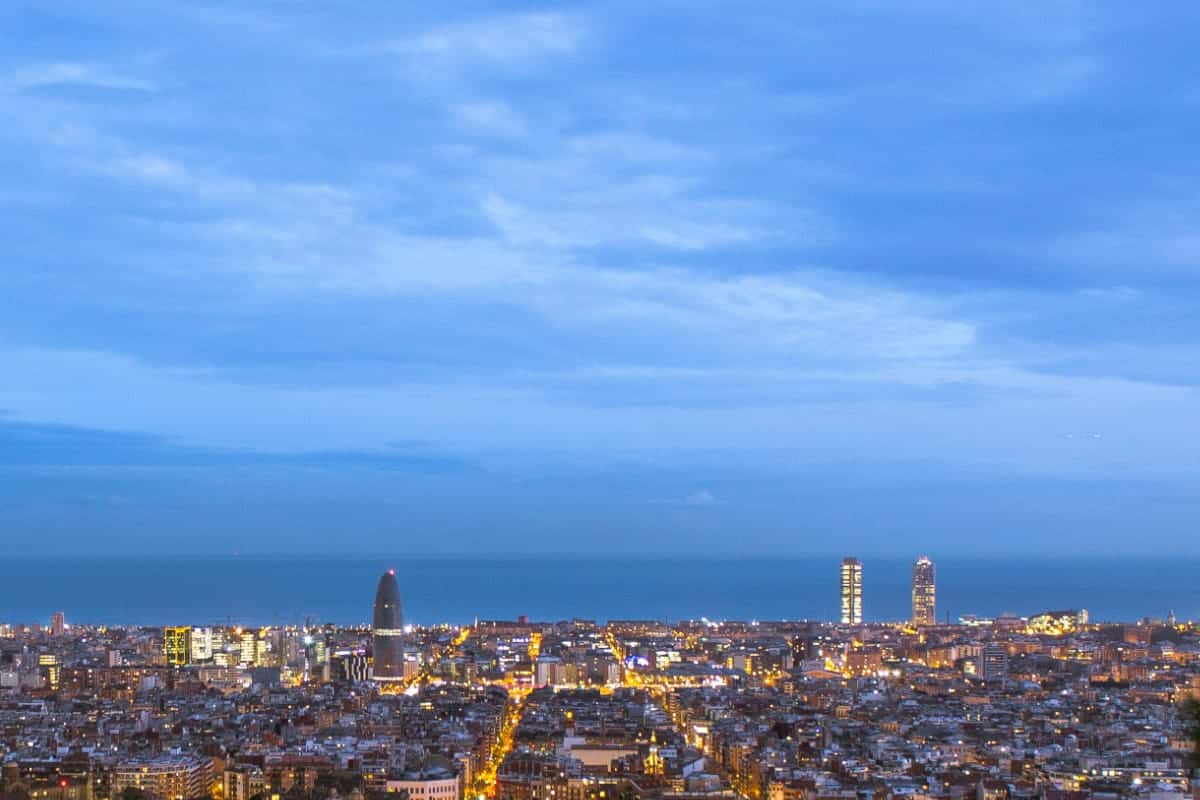
0 Comments